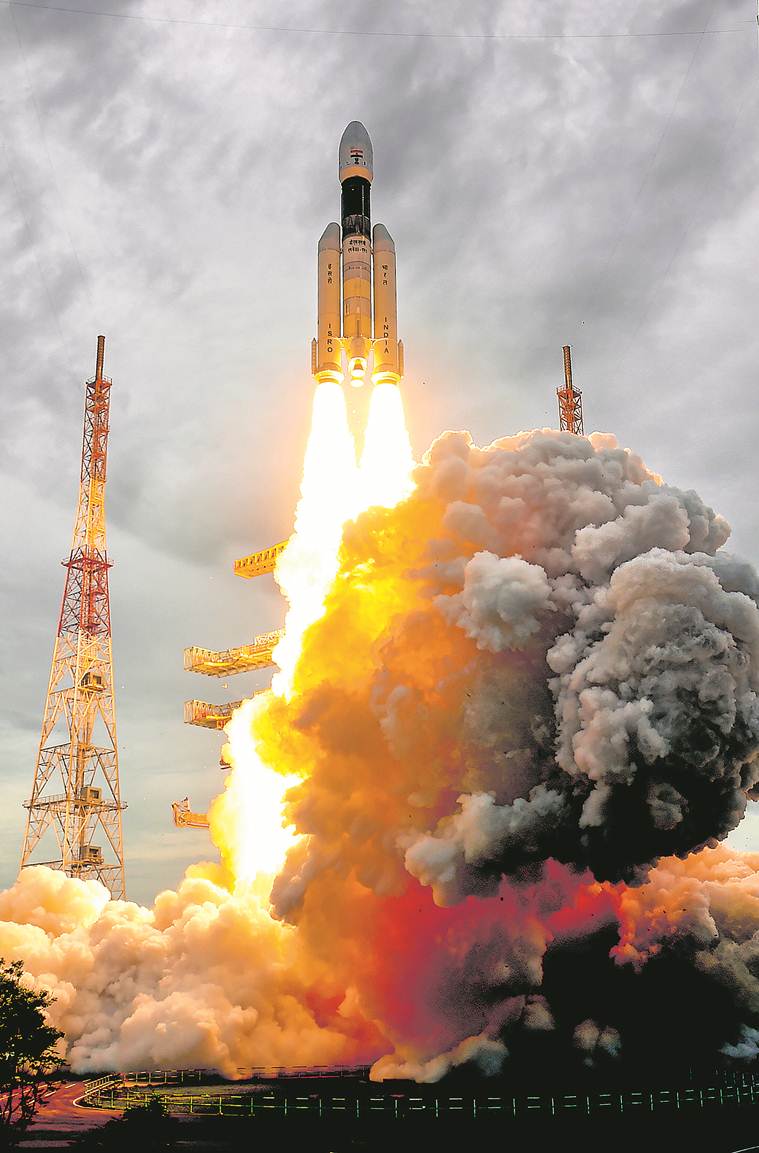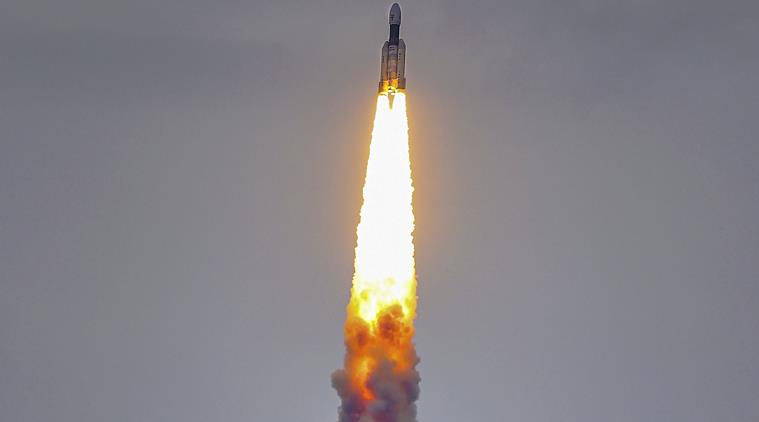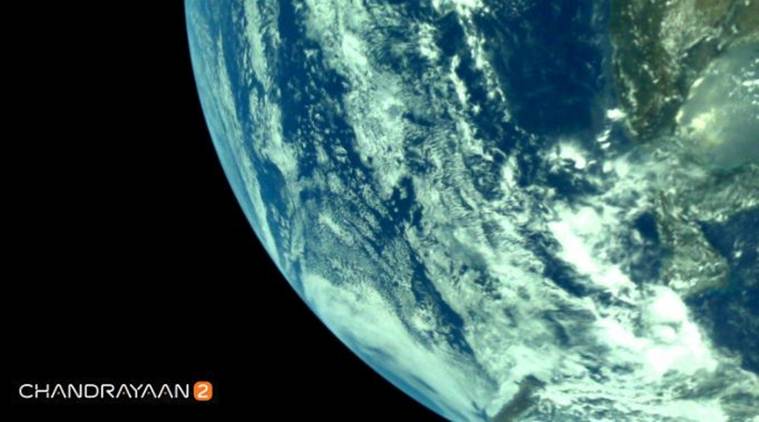From launch to lunar orbit insertion, tracing Chandrayaan-2’s journey so far
Ahead of injecting into the Lunar orbit, Chandrayaan had moved into a higher orbit around the earth after firing its onboard propulsion system. The orbit was raised for five times ahead of Tuesday's sensitive move over a period of 28 days since its launch on July 22.
 Indias second Moon mission Chandrayaan-2 lifts off onboard GSLV Mk III-M1 launch vehicle from Satish Dhawan Space Center at Sriharikota. (PTI)
Indias second Moon mission Chandrayaan-2 lifts off onboard GSLV Mk III-M1 launch vehicle from Satish Dhawan Space Center at Sriharikota. (PTI)
The Indian Space Research Organisation (ISRO) Tuesday reached another milestone by successfully placing its first lander mission to the Moon Chandrayaan-2 in Lunar orbit. The Lunar Orbit Insertion (LOI) manoeuvre was completed successfully using the onboard propulsion system, ISRO said in a statement
As ISRO scientists started firing Chandrayaan-2’s onboard liquid engine to put the spacecraft in an orbit around the Moon, ISRO chief K Sivan said: “our heartbeat increased”. “For 30 minutes, our heart was almost stopping,” he said. Follow Chandrayaan-2 Lunar Orbit Insertion LIVE UPDATES Here
Ahead of being injected into the Lunar orbit, Chandrayaan-2 had moved into a higher orbit around the Earth after firing its onboard propulsion system. The orbit was raised five times ahead of Tuesday’s move over a period of 28 days since its launch on July 22.
The 3,850-kg three-module Chandrayaan-2 was launched into an elliptical orbit around the Earth with the aim of landing a rover in the uncharted South Pole of the Moon on September 7, marking a giant leap in the country’s space programme.
 (Source: visme.co)
(Source: visme.co)
Here is how Chandrayaan-2 has sailed ahead since launch
A textbook launch
The ambitious Moon mission, which has been a pioneering achievement for India scientists, was launched on the back of the powerful GSLV Mk-III rocket carrying “a billion dreams” from the Satish Dhawan Space Centre at Sriharikota. The textbook launch became successful as the spacecraft crossed Earth’s escape velocity in 16 minutes 23 seconds. It had been deposited in an earth orbit by the 640-tonne GSLV Mk-III which, after burning its successive stages, separated itself completely from the spacecraft. The orbit at its nearest was 170 km from earth, and 39,120 km at the furthest. The launch went off without any hitch, a week after it was aborted 56 minutes before liftoff due to a technical snag.
 Chandrayaan-2 is attempting to become the first spacecraft to land near the lunar south pole. (Source: ISRO)
Chandrayaan-2 is attempting to become the first spacecraft to land near the lunar south pole. (Source: ISRO)
Five Earth-raising manoeuvres
Over the course of 23 days, the heavy spacecraft spent its time circling the Earth’s orbits as scientists performed a series of earth raising manoeuvres before placing it into the Lunar orbit. Two days after its ascent into space, Chandrayaan 2, on July 24, had successfully performed its first manoeuvre, two days later, on July 26, it performed its second earth-bound orbit raising manoeuvre. On July 29 it performed its third raising manoeuvre after being put in an Earth-bound elliptical orbit. Two more such manoeuvres were performed on August 02 and August 06 before preparing to break free from the Earth and move towards the Moon on August 14.
 The search for water on the moon is one of the main objectives of Chandrayaan-2. (File Photo)
The search for water on the moon is one of the main objectives of Chandrayaan-2. (File Photo)
Chandrayaan-2 to soft-land on Moon on September 7
Following the LOI, there would be four more manoeuvres to make the spacecraft enter its final orbit, passing over the lunar poles at a distance of about 100 km from Moon’s surface, ISRO said. Subsequently, the Vikram lander would separate from the orbiter on September 2. Two orbit manoeuvres would be performed on the lander before the initiation of powered descent to make a soft landing on the lunar surface on September 7.
 ISRO released the first set of images of earth captured by Chandrayaan-2 from outer space. (Twitter/@isro)
ISRO released the first set of images of earth captured by Chandrayaan-2 from outer space. (Twitter/@isro)
The Chandrayaan 2 mission will try to understand the composition of the Moon by studying the measurements on the near-surface plasma environment and electron density in the lunar ionosphere. The mission will also measure the thermophysical property of the lunar surface and seismic activities. Apart from this, Chandrayaan 2 will also study the water molecule distribution using infrared spectroscopy, synthetic aperture radiometry & polarimetry as well as mass spectroscopy techniques.






